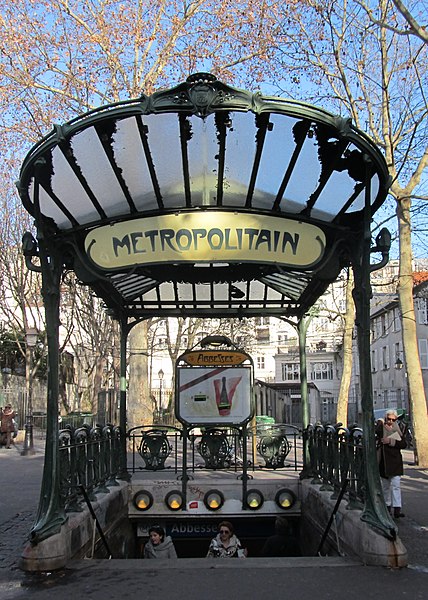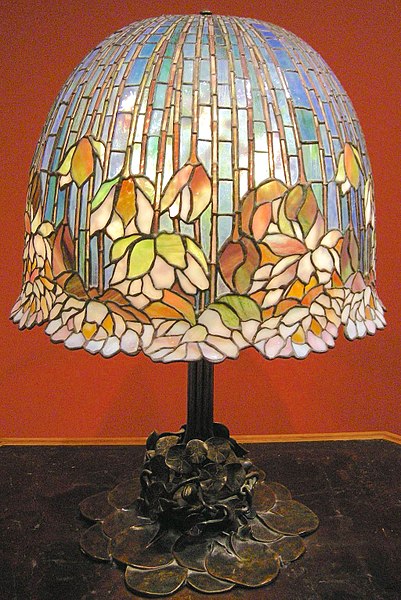Jugendstil was an artistic movement, particularly in the decorative arts, that was influential primarily in Germany and elsewhere in Europe to a lesser extent from about 1895 until about 1910. It was the German counterpart of Art Nouveau. The members of the movement were reacting against the historicism and neo-classicism of the official art and architecture academies. It took its name from the art journal Jugend, founded by the German artist Georg Hirth. It was especially active in the graphic arts and interior decoration.
Image: Mathildenhoehe ernst ludwig haus 076
Image: Otto Eckmann Jugend Nr. 14, 1896
Image: La maison de Peter Behrens (Musée de la colonie d'artistes, Darmstadt) (8728647639)
Armchair and aluminum bronze doors designed by Peter Behrens for his music room at Darmstadt
Art Nouveau is an international style of art, architecture, and applied art, especially the decorative arts. It was often inspired by natural forms such as the sinuous curves of plants and flowers. Other characteristics of Art Nouveau were a sense of dynamism and movement, often given by asymmetry or whiplash lines, and the use of modern materials, particularly iron, glass, ceramics and later concrete, to create unusual forms and larger open spaces. It was popular between 1890 and 1910 during the Belle Époque period, and was a reaction against the academicism, eclecticism and historicism of 19th century architecture and decorative art.
Image: Abbesses
Image: Otto Eckmann Jugend Nr. 14, 1896
Image: Louis comfort tiffany, lampada da tavolo pomb lily, 1900 10 ca
Image: Louis Majorelle Wall Cabinet Walters 6587







